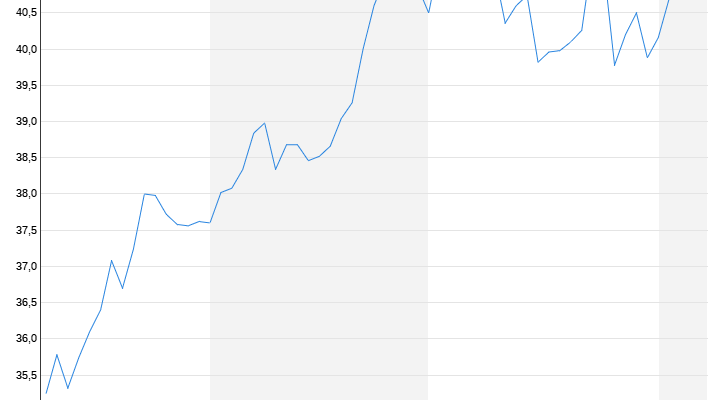Earn high bonuses
The past is catching up with DWS again
By Stefan Schaaf
May 8, 2024, 5:09 p.m
Listen to article
This audio version was artificially generated. More info | Send feedback
According to a report, the fund company DWS has reported the assets it actually managed to be higher than it actually was for years. This also has an impact on executive bonuses.
For years, the investment company DWS reported the assets it actually managed to be higher than it actually was. The reason for this was that consulting mandates were included in the assets under management (AuM) and the net flows and were not specifically reported. The Deutsche Bank subsidiary has now ended this practice itself and has shown that the AuM it actually manages is around three percent lower. The “Financial Times” (FT) first reported on this.
“We have worked to increase transparency regarding the nature of our assets under management and cash flows, for example by providing a more detailed description of the methodology used to determine assets under management and cash flows from the fourth quarter of 2022, or by reporting advisory assets separately the first quarter of 2024, including the history for 2022 and 2023,” said DWS at the request of “Capital”.
According to the information, the AuM in advisory mandates corresponded to a share of around 3.1 percent of the total assets under management in the first quarter of 2024. Advisory mandates are low-margin business and therefore contribute less to income than classic AuM in funds or management mandates. With advisory mandates, customers receive, among other things, information on how they could distribute their funds across different asset classes, while with funds, for example, DWS invests the money on behalf of the customers.
Bonuses directly linked to net cash flows
According to the “FT” report, DWS did not explicitly disclose until the end of 2022 that its managed assets also included advisory mandates. The scope of advisory assets has grown disproportionately in recent years, the newspaper writes, citing both the data now published by DWS and people who are familiar with the historical data.
Three people with direct knowledge of the internal discussions at DWS said that the asset manager had placed great emphasis on acquiring new advisory mandates since its former CEO Asoka Wöhrmann took office at the end of 2018, a few months after the company’s IPO. DWS went public in spring 2018, with Deutsche Bank currently holding 79.49 percent of the shares.
According to the “FT”, bonuses for managers and other employees have been directly linked to net cash flows since the IPO. DWS’s compensation policy called for executives to increase net cash inflows as a percentage of assets under management by three to five percent per year, as one of four goals in its long-term incentive plans.
Wöhrmann resigned two years ago
In 2021 – the first year for which data is available – DWS management achieved 150 percent of its targeted cash inflows, according to the report. Wöhrmann resigned two years ago after the Frankfurt public prosecutor’s office searched the company’s offices over greenwashing allegations.
The FT suggests in its report that the bloated AuM has enabled management under Wöhrmann to increase their bonuses. “Net cash flows are – among others – one of these factors and can influence variable remuneration in both directions,” writes DWS in its statement. However, the net flows would not have a strong influence on the bonuses.
“The Advisory Services inflows, and in particular the consideration of market movements in their calculation, did not have a significant effect on management compensation in any year.” However, it remains unclear what is “essential” and what significance the inventory has for remuneration.
This text is at first Capital.de appeared.
